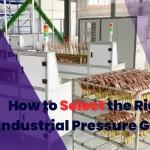
Strain gauge pressure sensors are widely used for measuring larger pressures and play significant roles in various fields, such as measuring internal pipeline pressures, gas pressures in internal combustion engines, differential pressures, injection pressures, pulsating pressures in engine and missile tests, and fluid pressures in various scenarios.
Features:

The working principle of a bourdon tube pressure gauge involves an elliptical bourdon tube made of phosphor bronze installed inside the case. One end is fixed and connected to a siphon pipe, while the other end is sealed and connected to a linkage and lever, with the pointer fixed on the pinion shaft. When pressurized, the tube expands from an elliptical shape to a circular one, forcing the bourdon tube to extend outward, with greater pressure causing more extension.Pressure Measurement Devices

The operation of an electrical contact pressure gauge relies on the bourdon tube within the measurement system. Under the effect of the measured medium’s pressure, the bourdon tube’s free end undergoes corresponding elastic deformation—displacement. This displacement is transmitted and amplified through a gear mechanism by a rod, with the indicator (along with contacts) on the fixed gear showing the measured value on the dial.


The principle of a U-tube manometer is that before connecting to the pressure measurement point, the liquid levels on both sides of the U-tube are at the zero mark. Upon connection to the measurement point, the liquid levels within the U-tube change. If the liquid level on the side connected to the measurement point drops, it indicates positive pressure; conversely, it indicates negative pressure.
Inclusion
Various pressure measurement devices, including strain gauge sensors, Bourdon tube gauges, electrical contact instruments, capacitive sensors, and U-tube manometers, each offer unique advantages such as adaptability, durability, precision control, sensitivity, and zero-energy operation. Together, they form a complementary technical ecosystem essential for modern industrial systems.
Driven by the need for intelligence, miniaturization, and high precision, pressure sensor advancements now focus on integration (e.g., MEMS), multifunctionality (e.g., temperature compensation, wireless transmission), and resilience in extreme environments (e.g., high temperatures, corrosive media). These innovations enhance industrial automation and provide critical data support for emerging fields like smart manufacturing and smart cities.


